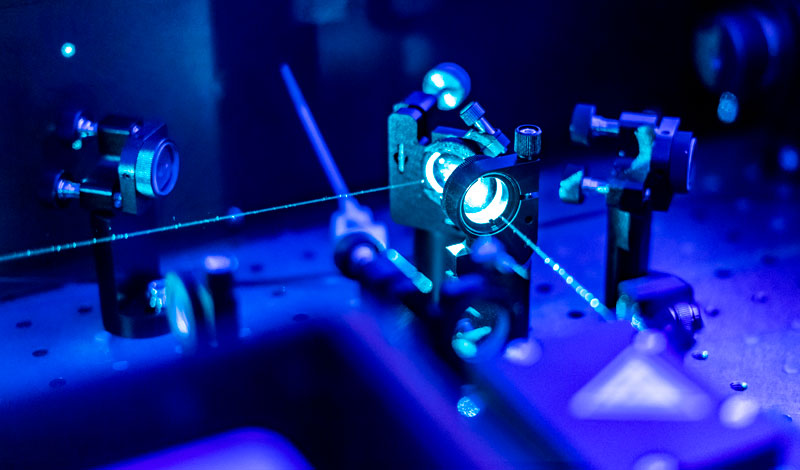
Posted on
Traditional ion beam sputtering (IBS) provides excellent control over ion energies and thin film stoichiometry, making it the process of choice for sputtering metals and dielectrics for applications such as vanadium oxide microbolometers and VCSELs. Still, IBS has various challenges in meeting the necessary standards for applications in which a high degree of precision and process control is needed to ensure end-product performance. In this article, we discuss how Bias Target Sputtering (BTS) and BTS Co-Sputtering have the ability to overcome these challenges.
Ion Beam Sputtering Configuration
While traditional IBS systems provide good process control, there are drawbacks for certain applications. A primary drawback is that high-energy ions can sputter from the target, other system components, and shields. The particulate contamination from system components and shields can lead to degraded film quality. Additionally, having a long source-to-target distance requires a large footprint.

Bias Target Sputtering Configuration
Bias Target Sputtering (BTS) helps overcome several of the challenges of IBS. In contrast to the high-energy ions typical of IBS, BTS uses low-energy ions, below the sputter threshold, preventing particulate contamination. A negative voltage is applied to the target, creating a plasma sheath near the target that accelerates the ions in a way that enables sputtering from the target only. This eliminates contamination and scatter from beam overspill, enables tight stress control, and creates dense, defect-free films. In BTS, high-energy ions can only sputter the target, and these systems potentially have shorter source-to-target distance, allowing for a smaller footprint.

BTS Co-Sputtering
BTS can also be configured for Co-Sputtering of two target materials at the same time. In Co-Sputtering, the targets are oriented perpendicular to the substrate, and a shield is used to prevent cross-contamination between the targets. Again, a negative voltage applied to the target materials generates an “acceleration zone” near to targets, eliminating contamination from system components. The relative sputter rates of the two materials can be controlled by varying target voltages.

Denton’s Infinity Ion Beam Deposition system with the BTS module offers independent control over ion currents and energies and operates at a low pressure to provide excellent control of thin film interfaces. The system provides a higher deposition rate compared to other IBD platforms.
The system increases target utilization, lowers contamination and particle generation, and provides uniform erosion. Additionally, the system achieves excellent uniformity on large substrates without requiring rotation, helping optimize overall manufacturing processes.
If you are interested in learning more about Denton’s Infinity Ion Beam Deposition system, contact us today!